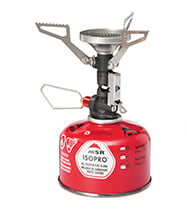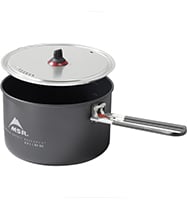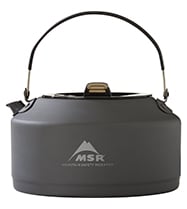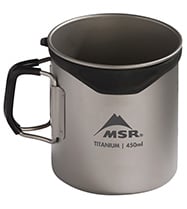Camping Cookware – 10 Essentials for Your Camp Kitchen
You can forget your second pair of socks and survive the trip, but leave a utensil or a lighter out of your camping cookware kit and it’s a whole other level of frustration and suffering. That’s why having a go-to system for every adventure is so important. The following is a list of the 10 most important items for every camp kitchen and how to choose them to stay reliably fed and happy on both backcountry and frontcountry trips.
The Basics
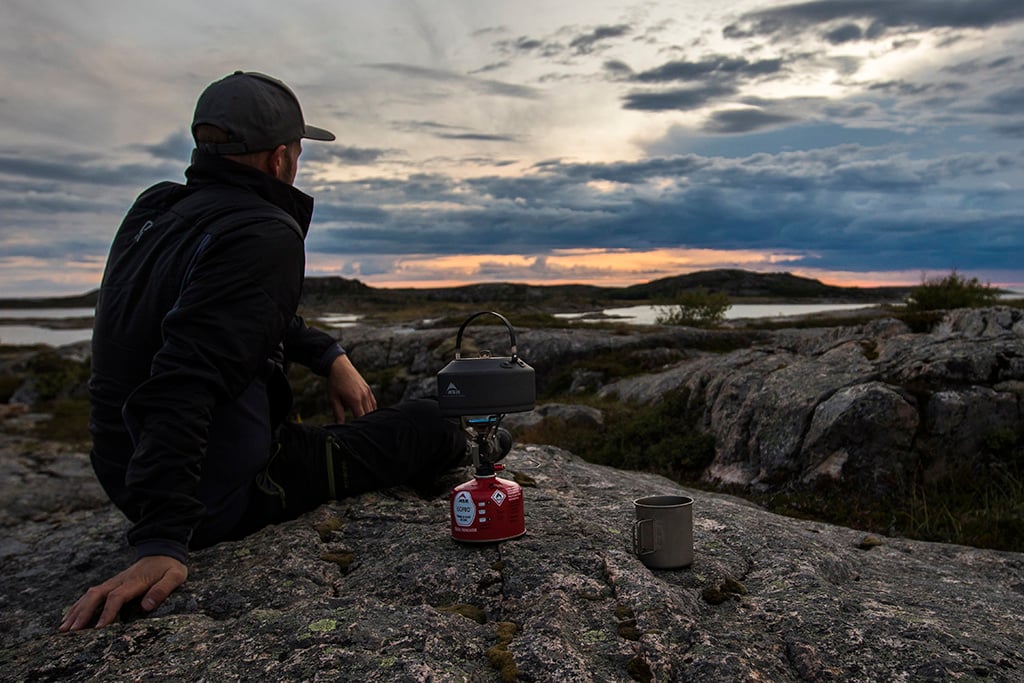
Building Your Backpacking Cookware & Camp Kitchen
Since you’re carrying everything, the key considerations for a backpacking kitchen kit are weight and space. Here, materials and form factor really matter. Things that are flat, small, and pared-down are essential—look for things that fold out to full size for better utility, like folding utensils.
Another way to shed weight and save space is to choose items that do more than one thing well. You can trade your spoon and fork for a single spork and choose pots and cups with marked or known measurements for cooking. MSR’s engineers have created a number of innovative ultralight utensils and nesting kits that offer full cooking utility in backcountry-friendly designs. And for proper sanitation, a little eco-friendly dishwashing soap is a great addition that’s kind on pristine environments and will keep your group healthier on the trail.
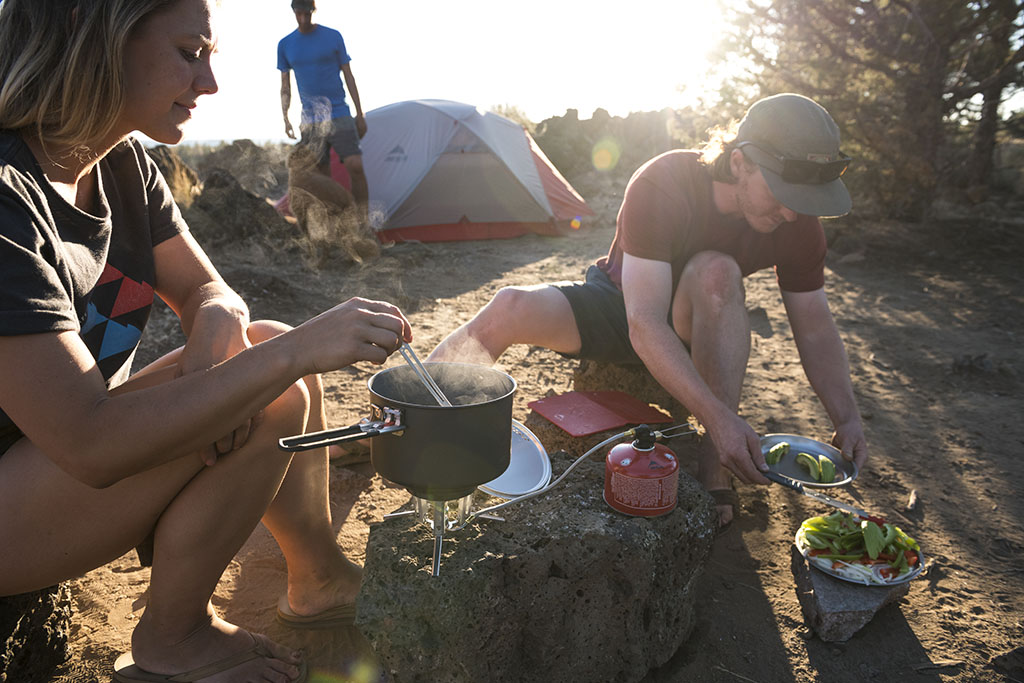
Building Your Car-Camping Cookware & Camp Kitchen
Since you don’t have to carry this stuff on your back, compromise be damned. Mostly. Having a car or a van to haul your gear around in is something I have fully embraced with kids. Start with a bin that fits everything you might like to take. You’ll want one big enough that it’s not too hard to repack after every meal, but not so large that it’s in the way. Within that constraint, however, you get the luxury of bringing real, full-sized things that make cooking easier, more fun and far more satisfying: Bigger knives, bigger organizers and bigger cook sets, a real frying pan and maybe even some dedicated pint or wine glasses! The car-camping kitchen is also a real plus for coffee snobs, allowing the luxury of hand-ground coffee in your maker and mug of choice, for a whole new level of morning enjoyment. Finally, stick with the eco-friendly soap here too. It’s the right move for a lot of reasons.
Now, keeping those basic criteria in mind, let’s dive into the top 10 essential pieces of gear to consider for building your ultimate camp kitchen:
The Essentials
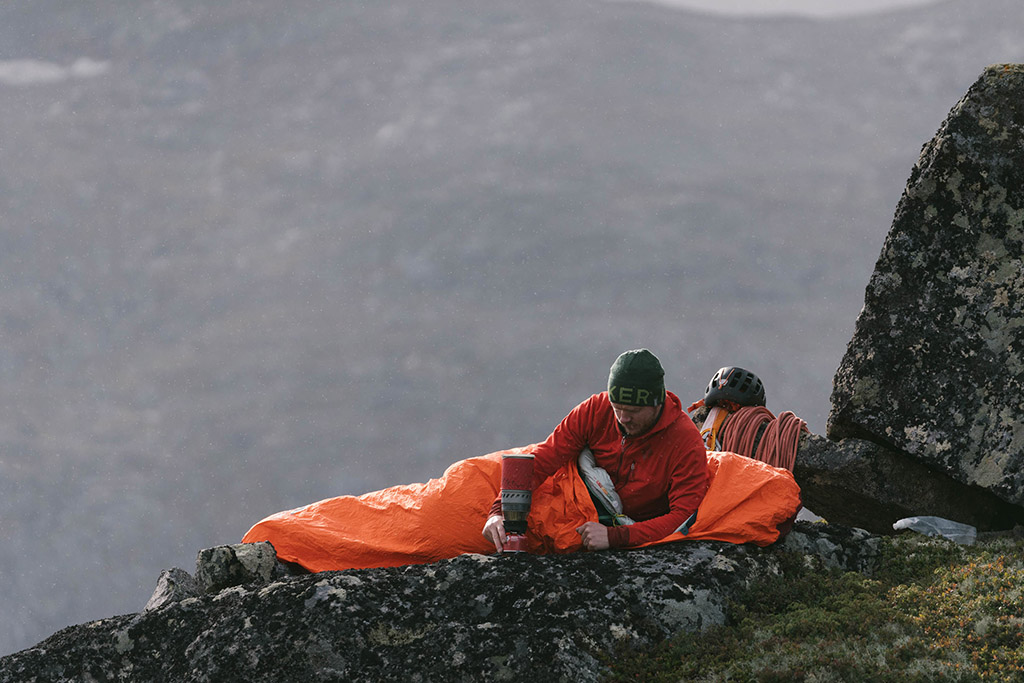
1. The Stove
Camp stoves have become incredibly specialized and choosing the right one can really change the tenor of your adventure. Pick your stove based on the type of meals you want to cook, and the types of pots and pans you need to do it.
Some systems, like the Reactor® Stove System, excel at melting snow, boiling water and not a lot else. As logical as that may be for a trip with boil-only meals like freeze-dried pouch meals, I also find this stove an essential indulgence when car camping for ultra-fast morning coffee, and quickly warming water for dishes.
On the other end of the spectrum is something that simmers reliably yet can still bring the heat when needed. While the WindBurner® stove system blurs the lines between fast water-boiler and more versatile cook system, with its wide range of pots—and now even a ceramic, non-stick skillet—my go-to is actually the WindPro™ II. The WindPro’s remote burner lets you use a windscreen, so it’s a miser on fuel. This stove also roars and simmers on-demand, and you can easily pack two for car camping, using a fraction of the space of a larger, conventional “two-burner”.
While those stoves are my favorites, check out this post for a more comprehensive dive into the question, “Which camp stove should I bring?”.
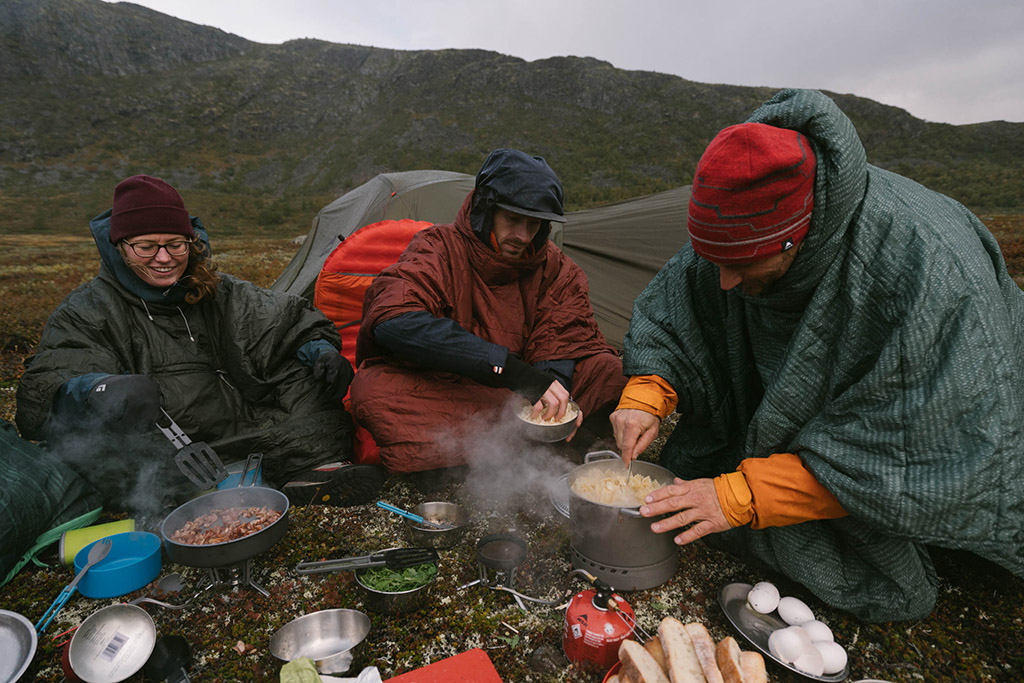
2. The Cookware
While cookware has not undergone the intense evolution that camp stoves have, it is clearly every bit as essential. Like nearly everything else in your camp kitchen, your needs are dictated by your menu plans, the number of people in your group and your weight considerations. In addition, you need to make sure your cookware is a good fit for your stove choice and that the materials provide the cooking performance you seek.
In general, I find myself erring on the side of larger pots for the added utility and speed, especially when cooking for three or more. The extra weight is negligible and finding out things don’t quite fit is a lot harder to deal with than having a little extra space. Strainer lids on my pots are now a must—no more dumping dinner on the ground for me, thanks.
The other must, regardless of the trip, is compactness. A nesting set is a base requirement for minimizing space in a backpack or a car camping kitchen bin. You can stuff your stove and socks in a backpacking pot, but bigger kits like the Flex 4 (that NEVER leaves our car camping kitchen bin) ingeniously packs dishes, cups, plates, pots, and even folding utensils into the largest pot with room to spare for some dishtowels and random things.
The efficiency of space achieved through nesting makes all the difference not only for packing but for the convenience of being able to grab a single bin and be ready to roll with everything we need for dinner.
Oh—and one more thing. For car camping, get a real, home kitchen-worthy skillet (ideally cast iron so you can use it over a campfire if you so choose).
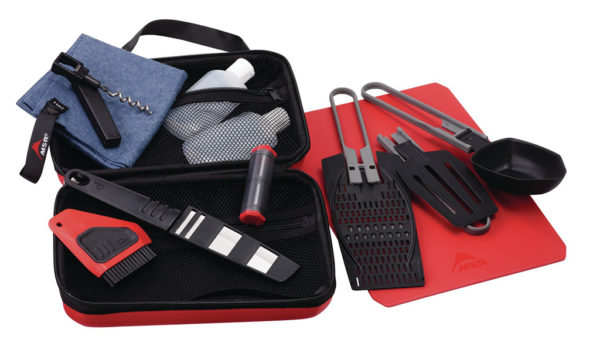
3. The Cupboard
There is no overstating the importance of this bit of organizational wizardry. The base idea here is that you centralize the minutiae of your camp kitchen so that when it’s time to cook, you just grab what you need and go.
While backpacking, it can be as simple as a Mess Kit, if those things aren’t already packed in your cook set, and an Ultralight Kitchen Set for the core essentials of your backcountry kitchen.
A road trip camping kitchen demands something classier though, like an Alpine Deluxe Kitchen Set. Being able to hang the kit is a big plus and its semi-rigid form means no sagging and easy access. Ideally, this kit would hold your spices and utensils (for eating, plus prep knives, can opener, corkscrew, etc.). For car camping, I use multiple Alpine Spice containers for key spices I use a lot of and can then just scavenge singles for a backpack.
I’m also becoming a big fan of SealLine® Blocker™ Dry Sacks. Their range of sizes and colors are perfect for organizing and they’ll gobble up all those annoying things floating around your kitchen bin, too. Also mandatory is a mesh stuff sack of some sort so you can pack up those not-quite-dry things without worrying about them getting funky.
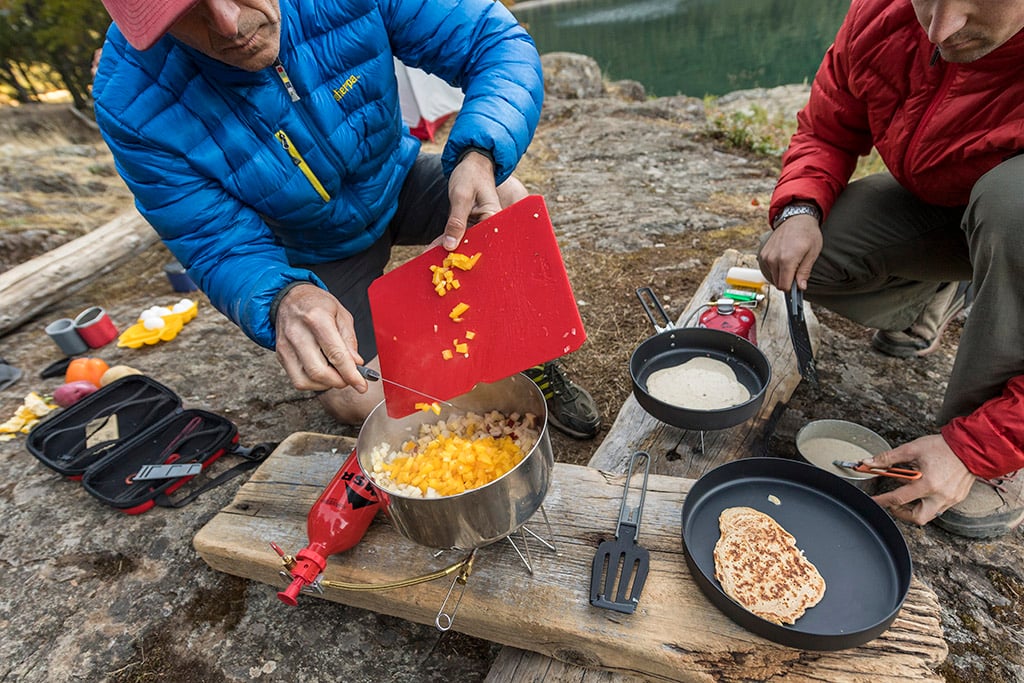
4. A Cutting Board
Yes, absolutely, unless you are exclusively eating freeze-dried meals, in which case you have my sympathy. Ranging from this stout and compact cutting board to the larger wafer-thin plastic ones that you can find in almost any housewares section of a grocery store, these things are invaluable. The compact and folding Alpine Deluxe Cutting Board is great for any style of trip. Its thickness creates that clean, flat and stable spot you can never find for easy prep in the backcountry, and it slips easily into your pack lid or car camping kitchen kit. In the frontcountry, cutting boards make great prep areas on nasty campsite picnic tables too. This isn’t rocket science. Just get a couple.
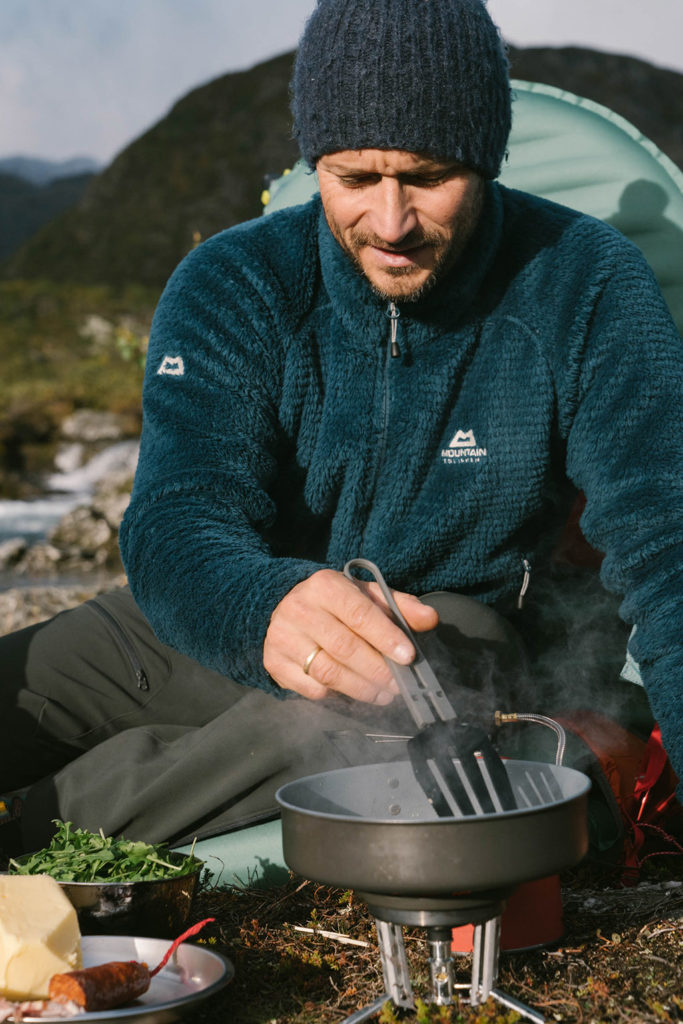
5. Cooking/Folding Utensils
I did a trip recently where my partner forgot his utensil and ended up carving a very crude food shovel from a stick. Not ideal, so don’t forget your utensils.
Folding utensils are awesome for their compactness, minimal weight and multi-tasking prowess on backcountry journeys. For frontcountry trips, I prefer adding a basic bamboo or wood cooking spoon to my car camping kitchen kit, as well as a legit turner for your eggs and pancakes. And while you’re at it, toss in some real silverware too.
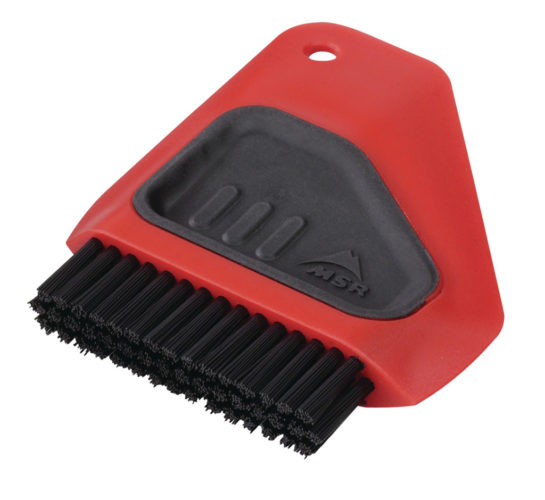
6. The Scraper
Raise your hand if you’ve ever singed oatmeal to the bottom of a pan while camping. I thought so. That’s why having a scraper, though seemingly inconsequential, will pretty quickly become one of your favorite kitchen tools, wherever you cook. MSR’s Alpine Dish Brush combines the scraper with a brush and has a side radius that matches the edges in most ports, making it the perfect tool for the job.
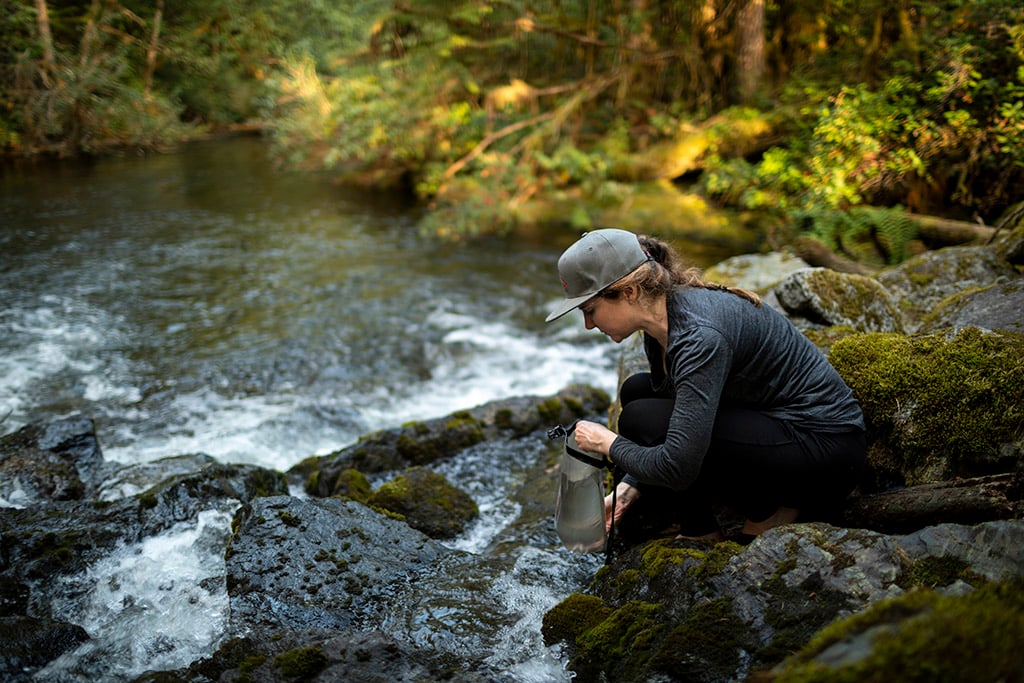
7. Water Storage
Getting your kitchen water one liter at a time is just a hassle—thus I am never without a reservoir system like the Dromedary® or DromLite™ bags. Clearly, the lighter weight and packability of a DromLite bag is the better choice for backpacking, and 2, 4, and 6-liter sizes can be tailored to your group size. For car camping and heavier use, the burly Dromedary bags are the right choice, maxing out at 10 liters and delivering plenty of water for most groups.
The two best features about both types of bags are that they are pre-slung so you can hang them for ultimate convenience, and they come with a 3-in-1 cap for three different flow rates. The smallest spout is ideal for handwashing, the second for drinking and filling water bottles and pots and, ultimately, just unscrew the whole thing for filling and high-volume needs.
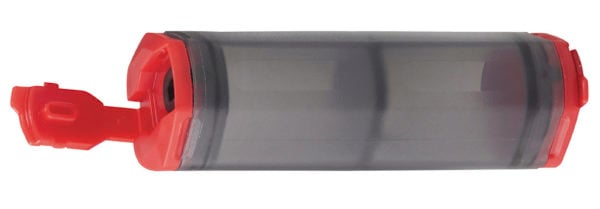
8. Spice Shakers
Just as essential as a stove are spices. Having a solid staple of key spices is simply far better than not having them, for so many obvious reasons. If you prefer to keep things simple and light, the moisture-resistant Alpine™ Salt and Pepper Shaker is all you need. Its classic over/under design lets you carry the basics with minimal weight and space on the trail.
For the beefed-up road trip version of a spice kit, I carry multiple Alpine Spice Shakers, which are single chamber designs that I fill with the mandatory standards of garlic powder, cumin, Italian seasoning, sea salt, crushed red peppers and the amazing Jane’s Krazy Mixed-Up Salt that I bring in spades—often bumping to a 2 oz. Nalgene® bottle for such a staple. And while technically not a spice, keeping a small bottle of olive oil in your kit will get you out of many culinary cul-de-sacs.
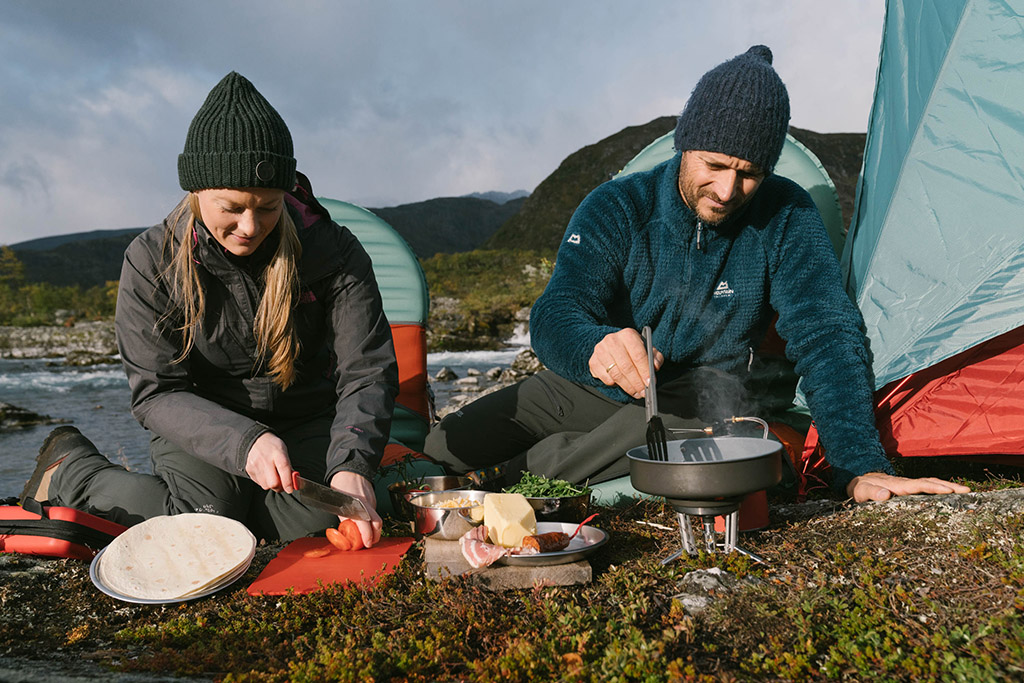
9. A Good Knife
Arguably the most important part of a chef’s toolbox, the kitchen knife is certainly a cornerstone of any meal not from a bag. While I’ve been on some trips where people have produced exalted, hand-hewn Japanese knives from wooden boxes, I’ve found the santoku-like MSR Alpine Knives to be incredibly good and extremely affordable—two things you don’t often find in the same knife. In fact, I have a few that are still going strong after years of use.
The Alpine™ Kitchen Knife is the smaller one that fits easily in a pack lid or in the Alpine Deluxe Kitchen Kit. I think of it as an oversized paring knife – an incredibly useful size. However, in the frontcountry, I’d be lost for big chopping jobs without its big sister, the Alpine Chef’s Knife. This thing is legit and handles group prep and heavy chopping and slicing tasks with surprising ease. Both come with vented sheaths for safe storage and both, in my opinion, are a must for any camp kitchen.
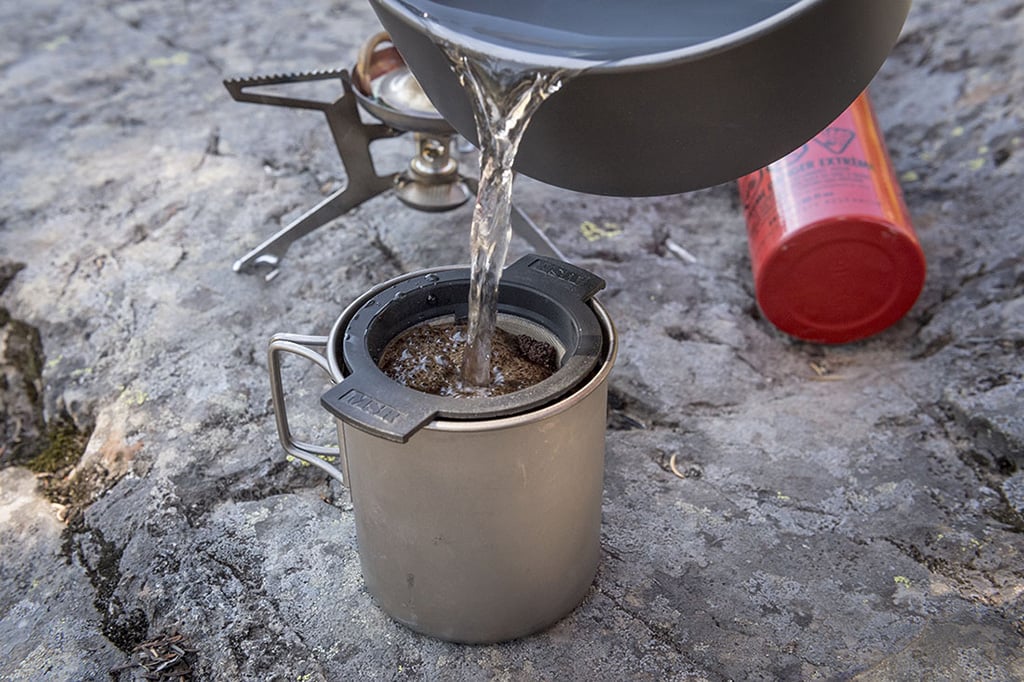
10. Coffee/Tea Tools
I find it funny that coffee and tea can take on the same essential status as fire and a cookpot, but it’s a reality for the vast majority of campers—myself included. Forget these things and you’ll be looking just a bit harder for friends on the next adventure. It’s that serious.
That’s why keeping it simple is so important and the MugMate™ delivers. No filters needed and a simple one-piece, pour-over design means you need only remember this one thing (aside from the coffee and loose tea) and you’re all set for a great morning. It even comes with a lid that helps keep the heat in while steeping and provides a place to set the strainer when you’re done brewing.
You could also add a touch of class (and way faster boil times) with a Pika™ Teapot. It might be a luxury on a backpack, but it’s a definitive essential while car camping. Cool looks aside, the real crowd-pleaser is the quintessential laminar (turbulence-free) flow. Each pour creates a glass-smooth column of water for precision accuracy and zero drips. It’s really just the kind of engineering you’d expect from an MSR teapot.
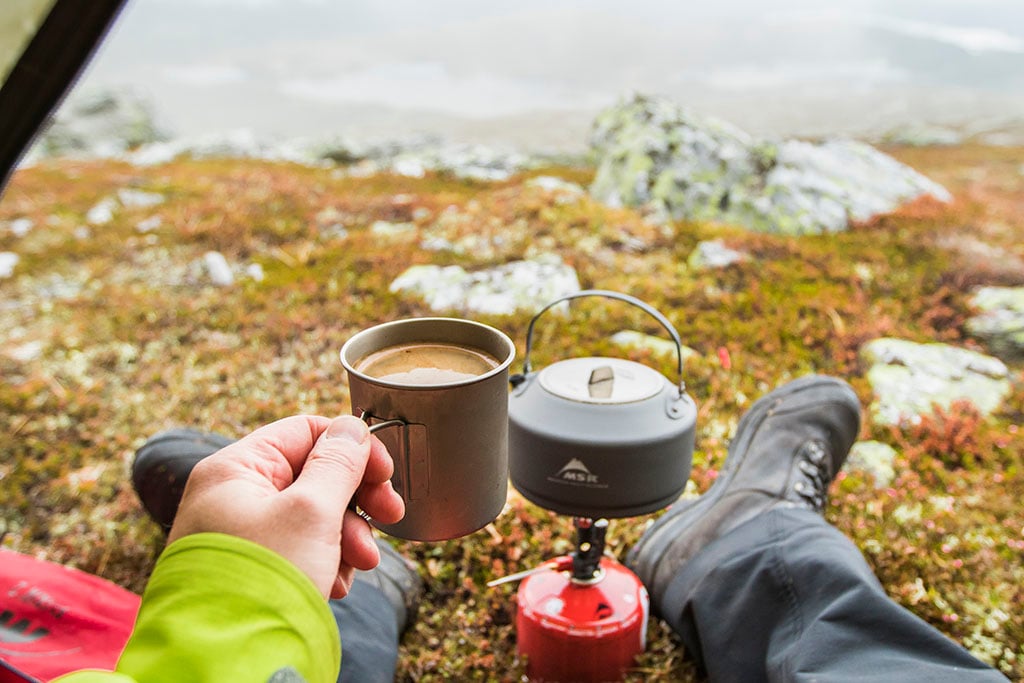
A Note on Food Storage
Now that you have the essential camp kitchen tools covered, how about the actual food? Likely the most important addition to your trip’s menu isn’t food, it’s the plastic storage bags (ideally the reusable silicone ones, like Stasher Bags; though slightly heavier, they’re much easier on the planet). On a backpack, baggies allow you to re-package items from their bulky retail packaging, and make “meal-in-a-bag” serving sizes (think personal snacks or oatmeal with raisins and brown sugar) that can easily be distributed among group members. They can even serve as an emergency, water-resistant pouch for first aid items or your phone, are a great barrier to leakage, especially with bottles of oils and other things prone to leaking, and make awesome, sealable trash bags after you empty them.
On a road trip you can use baggies for leftovers, tossing the bag in the cooler for later, or a hundred other things just like at home. And the more heavy-duty the better.
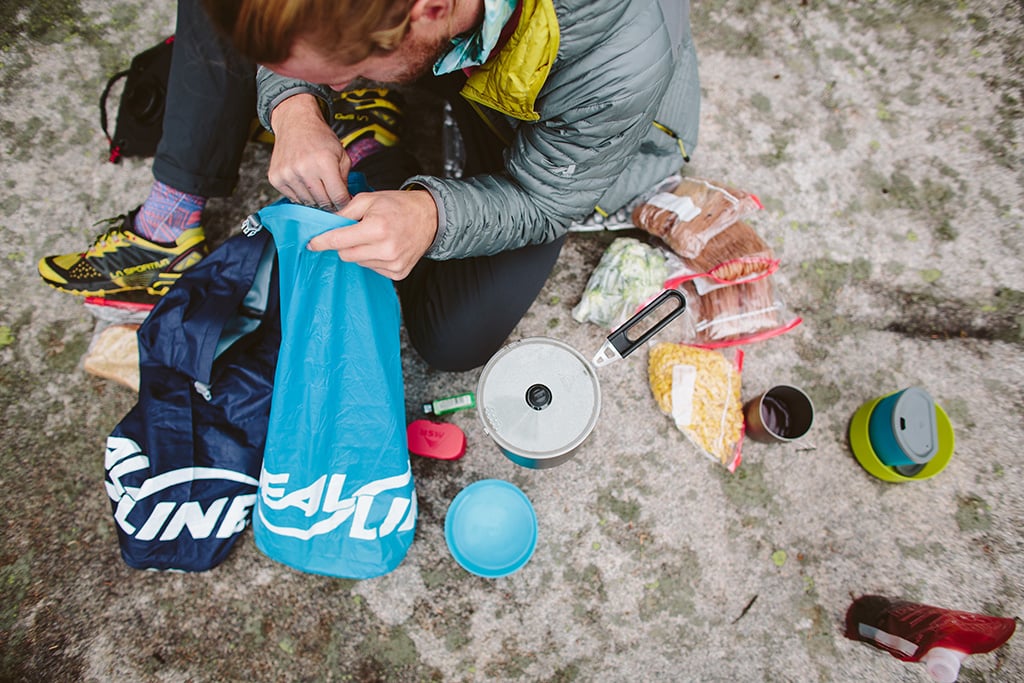
Organization is also key for any trip. On a backpack, I use color-coded BlockerLite™ Dry Sacks and Cinch Sacks. I prefer organizing my own food with a color or style of sack indicating each meal type (breakfast, lunch, dinner and snacks). This makes finding the right food a cinch, and hanging food for bear bags is really straightforward since everything is already in a sack. The dry bags will also let you sleep easy if it pours overnight.
On the road, I transition to Rubbermaid® bins, often organized by meal type on longer trips, but can be just a bin or two for the weekend. Inside the bins, I try to stay away from anything that isn’t flat or disposable when it’s empty, and most retail packaging is just fine for a week or two on the road. Some Tupperware is useful for bulk items and is a nice luxury for leftovers, but generally, I find the protection of a bin is adequate for things like fruit and bread, and being organized by meal type is reasonable without being obsessive.
Read on:
- Camp Recipes, Snacks & Meal Plan Ideas
- 7 Easy Family Camping Meals
- Best Ways to Make Coffee in the Backcountry
 Jim Meyers survives between road trips by pushing all the buttons at Vertizon Photography and is a recovering copywriter, turned freelance writer. He’s climbed, skied, backpacked, cycled and fly fished extensively throughout North America and is selfishly raising two budding adventurers with his wife and Type-2 fun soulmate in Seattle, WA.
Jim Meyers survives between road trips by pushing all the buttons at Vertizon Photography and is a recovering copywriter, turned freelance writer. He’s climbed, skied, backpacked, cycled and fly fished extensively throughout North America and is selfishly raising two budding adventurers with his wife and Type-2 fun soulmate in Seattle, WA.
Updated. Originally Published August 22, 2020.

